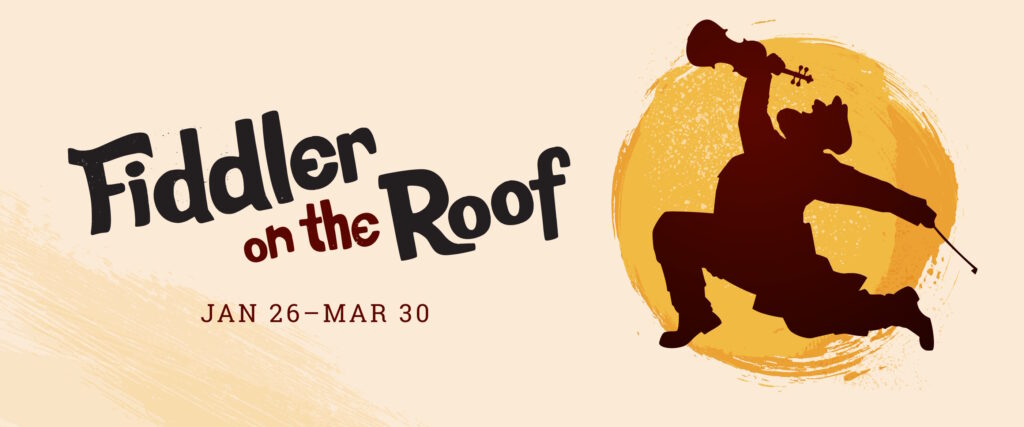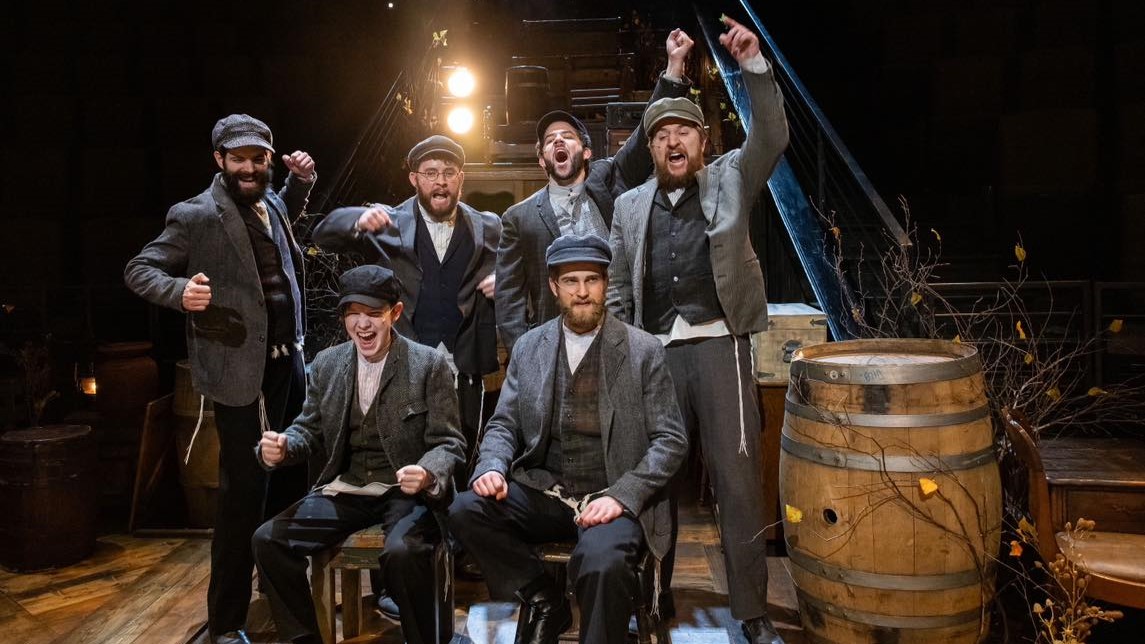SANDY—Sunrise, sunset. Since it premiered in 1964, Fiddler on the Roof has felt as eternal as its themes; themes of love and the collision of cherished tradition and inevitable change.
Written by Joseph Stein with music by Jerry Bock and lyrics by Sheldon Harnick, the musical is a beloved exploration of Jewish life in Imperial Russia circa 1905. This month, Hale Centre Theatre in Sandy, Utah has staged a production of the musical which deserves the consideration of local audiences.

Upon entering the theater, stage design immediately ushered patrons into the rural life of the characters as it extended clear to the doors. The impressive design included suitcases and trunks, underscoring the transient, uprooted nature of their lives—and enough wooden furniture to fill an antique warehouse. Above the stage floated trees and fence posts intertwined with dry vines and fall leaves. Historical photos were projected on sheets stretched between the trunks, and the soft sound of a cold wind blew through the PA system, heralding an upcoming winter, and the tragedy about to unfold.
Rabbi Spector, leader of the Congregation Kol Ami Synagogue in Salt Lake City, served as an advisor for the show. Mere months ago, his synagogue was the victim of bomb threats. And two years ago, a swastika was carved into the front door of another Salt Lake area synagogue. The persecution of Jews is not an historical relic. It is happening right now in our community. Coupled with Russia’s 2022 invasion of Ukraine, and Hamas’ 2023 invasion of Israel, and the themes of Fiddler feel tragically and urgently contemporary.
Hale’s Fiddler, directed by Ryan Simmons, was one of the most straightforward productions I’ve seen on this stage, which is usually a blur of rising and falling hydraulic platforms. Gratefully, Simmons let the story and characters speak for themselves. But lest we forget in which theater we are seated, the end of scene one was punctuated by a massive framed roof lowering onto the stage with the fiddler perched on the chimney—where it stayed for much of the duration of the night.
The familiar plot revolves around the family of a poor milkman, Tevye, and the romantic lives of his daughters—three of which get hitched by the end of the show. Tevye humbly and heartwarmingly bends his firm cultural beliefs to accommodate his daughters’ modern ideals, until he is ultimately pushed beyond what he can bear.
The acting and singing of Daniel Hess as Tevye and the entire cast were excellent. Lauren Pope, Haley Mendez Wawro and Erica Schoebinger starred as his eldest daughters, Tzeitel, Hodel and Chava respectively. Tzeitel is the most fleshed out of the bunch, as her romance fills the whole of Act I. Tevye wishes her to marry a successful butcher with the improbable name of Lazar Wolf (first name pronounced like laser), but Tzeitel only has eyes for a poor tailor.
DeLayne Bluth Dayton as matchmaker-and-busybody-extraordinaire Yente and Kelton Davis as Perchik rounded out the leads. Also credited was Aaron Ashton as The Fiddler, who received the second most applause after Tevye for his light and luscious bowing.
The theater in the round stage was both a blessing and hindrance to the production. “On the one hand” (to borrow Tevye’s pet phrase), it was a perfect fit for Lindsey D. Smith’s choreography, which was fully invested in traditional Jewish dance and filled with circular motions. But it also prevented half of the audience from seeing Tevye’s face at any given time—and let’s be honest, his monologues are the best parts of the show. Simmons and Smith did a fair and conscientious job of moving characters around so each side of the audience had something to look at, however, the constant movement did seem to occasionally stymie potential artistry, personality and connection with the audience.
While most of the staging was grounded and familiar, at the end of the day, Hale is gonna Hale—and “The Dream” was an absolute trip. A grandma in a rocking chair flew through a “Wizard of Oz” tornado, zombie mobs menaced and a cackling end boss soared in the air. It was all sorts of bananas, and I loved it. The gravity defying of Tevye and Goldes’ bed made me both terrified for the actors and absolutely ecstatic. Never seen that one before.
But still more impressive, and much more meaningful, was the staging of “Sabbath Prayer.” While the number centered on Tevye’s family, other families appeared simultaneously welcoming the Sabbath at the same time in their homes. It was a beautiful demonstration of the unity and commonality of the Jewish faith—and gorgeous to look at.
Lighting design by Marianne Ohran and sound by Michelle Ohumukini were usually strong, although both had some room for improvement. Actors’ faces occasionally went in and out of shadow. In Act I, it was more subtle, as if the actors were fighting gobo lights. However, in Act II it was clear that follow spot operators (the program names an astounding 18 of them) were occasionally struggling to keep up.
The mikes and sound of Hale were impressive, and it was usually easy to understand the words and music. The notable exception was the dream sequence, where vocal distortion and an odd “BOOM!” drowned out all understanding. Fortunately, with the exception of a single dead mic incident, the rest of the production was sonically impressive.
While the set design by Madeline Ashton was permeated in rustic wood, costume design by Dennis Wright was likewise saturated in the drab—in this case, grays—illustrating the poverty of the characters. Russian soldiers, on the other hand, were awarded silky green uniforms that set them apart from the monochromic locals.
Fiddler is the classic of classics, and it’s simply good for the soul for a person to see it regularly. Hale’s production is an excellent semi-professional representation and a highly recommended evening of entertainment—even if it isn’t quite a classic in its own right, and its eye-popping ticket prices may make potential patrons want to sing their own version of “If I Were a Rich Man”.
Still, Fiddler is the best thing I’ve seen at Hale Sandy since 2021’s Daddy Long Legs, and the best on the Center Stage since Strictly Ballroom in 2020. (The heralded 2021 production of Les Miz—which my brother-in-law said was the best show he’s ever seen—sadly sold out before I could get a ticket. I hope they do it again soon.)
It took about 20 minutes for Hale’s Fiddler to find its groove. Some of the book’s funniest lines were not given the pacing and delivery they deserved, and classics like “Matchmaker” and “…Rich Man” didn’t truthfully live up to their potential. But once the production hit its stride, it didn’t look back. It was tight, cohesive, and packed with humor and pathos. With strong performances, choreography and compelling direction, Hale Sandy wouldn’t be wrong to make this Fiddler a “tradition.”
[box]Fiddler on the Roof plays nightly (except Sundays) at 7:30 PM, with matinees at 12:30 PM & 4 PM on Saturdays, January 26 through March 30, 2024 at Hale Centre Theatre (9900 South Monroe Street, Sandy). Tickets are $34-$75. For more information, visit hct.org.[/box]
